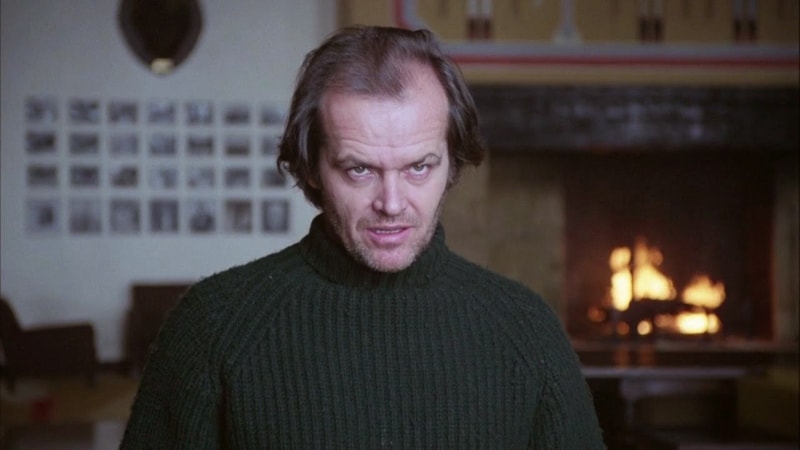Welcome to The Queue — your daily distraction of curated video content sourced from across the web. Today, we’re watching a video essay about the eldritch horrors hidden in Gordon Stainforth’s music editing in The Shining.
Just when you think there’s nothing left to say about Stanley Kubrick‘s The Shining, someone comes along and proves you dead wrong.
Indeed, the 1980 Stephen King adaptation continuously proves that it’s never quite ready to divulge all its secrets. Something nefarious and slimy always lurks in the labyrinthian halls of the Overlook Hotel, whispering in vulnerable ears, and teasing violence out of uncanny symmetry.
Then again, such half-heard metaphors are wholly appropriate for a movie bound up in residual hauntings, psychic phenomena, and drunken stupors. Jack Torrance and his family are spending a winter at a remote resort as caretakers. Almost immediately, an unseen force sinks its hooks into Jack’s bubbling temper, escalating his cabin fever into an ax-wielding frenzy.
As the video essay below teases out, one element of The Shining is especially responsible for the omnipresent sense of unseen horror: the music. And thanks to the man behind its deployment — music editor Gordon Stainforth — The Shining transforms the eerie drones of Hungarian composer Béla Bartók into the avatar for the evils of the Overlook.
“Mickey Mousing” is a technique honed in the early days of animation. It describes a synergy between the musical cues, chords, and notes with the motion taking place on-screen. Mickey Mouse throws a punch and a cymbal clangs. Each step from a cartoon cow is punctuated with a drum beat. That kind of thing.
The technique has strong connotations with slapstick and comedy. But in Stainforth’s hands, Bartók’s symmetrical arrangments take on the aspect of a corrupting influence. Inquiring strings become sinister whispers in Jack’s mind. Plodding percussion and deep bass cellos become an unseen manipulator, a puppeteer whose strings we cannot see but can most assuredly hear.
As the below video essay underlines, the fact that Bartók’s music synchs up with the action on-screen is nothing short of a miracle … or something more sinister. Stainforth wasn’t just working with pre-existing compositions, he was attempting to underlay those unaltered musical pieces with, effectively, the final cut of the film.
And yet, as you’ll see — and hear — the music in The Shining feels baked-in. As if it had always been that way. Forever and ever and ever.
Watch “The Invisible Horror of the Shining”:
Who made this?
This video essay on the invisible horror of The Shining is by kaptainkristian, a YouTube-based video essay channel that peddles in visual love letters to filmmakers, musicians, and syndicated cartoons. The account is run by Kristian T. Williams, whom you can follow on Twitter here. You can subscribe to kaptainkristian, and check out their back catalog on YouTube here.
More videos like this
- For another taste of kaptainkristian‘s work, here’s their video essay on how the Fleischer brothers pushed the limits of animation to create the definitive Superman.
- And here’s another sample of their work: how director Hayao Miyazaki uses sound to bring animation to life.
- Here’s Masters of Movies on why The Shining and The Lighthouse are the perfect cabin fever double bill.
- The ever-insightful CinemaTyler has produced a bananapants amount of Stanley Kubrik content. His essay on how Kubrik adapted the screenplay of The Shining is one of my favorites.
- Finally, to round things out, here’s a classic on the scariness of The Shining: “Quietly Going Insane Together” by Lessons from the Screenplay.

